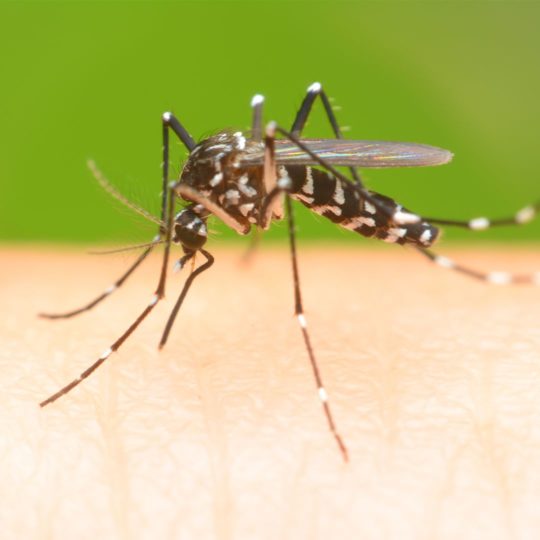6 Effective Mosquito Control Techniques
How to Get Rid of Them & Keep Them Away

If you’ve been out in the garden this spring, you may have already noticed the signs of some pesky pests. Yes, mosquitoes are back. Unseasonable warmth and a lack of snowfall means mosquitoes got an early start. But there’s still time to use these mosquito control techniques to help ensure your spring and summer are safe and comfortable.
Understanding Mosquito Behavior
If you know what mosquitoes are looking for, it’s easier to make sure they can’t find it in your yard. Here are some facts to keep in mind:
- Not all mosquitoes feed on blood. Females are the ones that bite you, requiring blood meal to reproduce. Males primarily feed on nectar.
- Mosquitoes are most active during dawn and dusk, but depending on the species and environmental conditions they can strike any time of the day.
- Mosquitoes breed in stagnant water and lay eggs in ponds, puddles, flowerpots, birdbaths, and even clogged gutters.
- They’re not only a nuisance with their buzzing and biting. They also transmit diseases like malaria, dengue fever, Zika virus, and West Nile virus.
Now that you know who’s after you, when they’re active, and what they’re looking for, you can help protect yourself from their uncomfortable, unhealthy bites.
Mosquito Control Techniques
Armed with knowledge about a mosquito’s behavior, you’re better equipped to go to battle with these lawn pests. Here are some preventative and control options.
- Proper clothing. If you know you’ll be outside during the dawn or dusk when mosquitoes are most active, cover up in long pants and sleeves to limit exposed skin. The same goes for if you’re headed to an area where they’re known to breed, such as ponds or wooded areas.
- Mosquito repellents. Apply insect repellent containing DEET, picaridin, or oil of lemon eucalyptus to any exposed skin. Follow the product instructions carefully and reapply as directed, especially if you’re spending an extended period outdoors. There are also products such as citronella candles and traps that help repel or capture mosquitoes in outdoor gathering areas.
- Remove standing water. Eliminate potential breeding sites such as empty flowerpots and bird baths. Keep gutters clear for the sake of proper drainage and mosquito prevention. If there’s standing water in your lawn, aerate, overseed, or add mulch to reduce soil compaction.
- Install screens and nets. Protect your home with window and door screens. Fix any holes in existing screens. Mosquito nets can also be used over beds, especially in areas where mosquito-borne diseases are prevalent and there’s less airflow.
- Maintain your yard. Minimize mosquito habitats by regularly mowing the lawn, trimming vegetation, and removing debris where water can collect and mosquitoes can hide. Consider planting repelling plants like citronella, lavender, and marigolds as a natural deterrent.
- Professional pest control. If you live in an area where mosquito populations are particularly high or dealing with mosquito-borne diseases, seek assistance from professionals. These experts can assess the situation and implement targeted strategies to effectively reduce mosquito populations.
By understanding mosquito behavior and using it to prevent pests, you can create safer and more enjoyable outdoor environment. Take proactive steps to control mosquitoes for a bite-free season. Contact Shades of Green Lawn & Landscape today for more preventative solutions and treatment options.